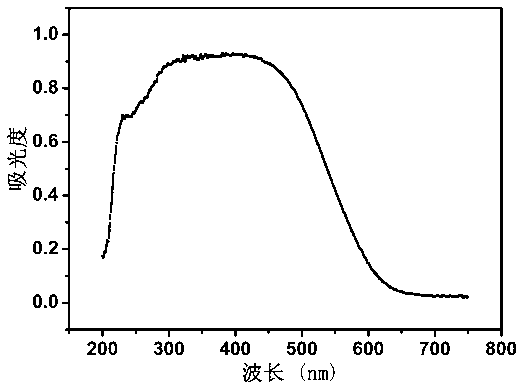Method for preparing Lewis acidic molecular imprinting type BiOI photo-catalyst with visible-light response and high selectivity by hydrothermal method
A highly selective, molecularly imprinted technology, used in chemical instruments and methods, catalyst activation/preparation, physical/chemical process catalysts, etc. Good results
- Summary
- Abstract
- Description
- Claims
- Application Information
AI Technical Summary
Problems solved by technology
Method used
Image
Examples
Embodiment 1
[0024] 0.79 g 2-nitrophenol, 0.004mol Bi(NO 3 ) 3 ·5H 2 O was dissolved in 80 mL of ethylene glycol solution and 1.0 g of polyvinylpyrrolidone (K30), and 0.004 mol of potassium iodide was added to the above ethylene glycol solution. The solution was stirred at room temperature for 30 min and then transferred to 100 mL of polytetrafluoroethylene for reaction. in the cauldron. The reaction kettle was reacted at 140°C for 24 h, then cooled to room temperature naturally, the synthesized product was washed three times with ethanol and deionized water, and then methanol:hydrochloric acid (volume ratio 1:1) mixture was used as the eluent, and passed through Soxhlet The extraction method removes the template molecule to obtain the Lewis acid molecularly imprinted BiOI photocatalyst. Such as figure 1 , 2 , 3, and 4, the Lewis acid molecularly imprinted BiOI photocatalyst prepared by the present invention has visible light response, good selectivity to target organic pollutants, an...
Embodiment 2
[0026] 0.79 g 2-nitrophenol, 0.004mol Bi(NO 3 ) 3 ·5H 2 O was dissolved in 80 mL of ethylene glycol solution and 1.0 g of polyvinylpyrrolidone (K30), and 0.004 mol of 1-vinyl-3-methylimidazolium iodide ionic liquid was added to the above ethylene glycol solution, and the solution was stirred at room temperature After 30 min, it was transferred to a 100 mL polytetrafluoroethylene-lined reactor. The reaction kettle was reacted at 140°C for 24 h, then cooled to room temperature naturally, the synthesized product was washed three times with ethanol and deionized water, and then methanol:hydrochloric acid (volume ratio 1:1) mixture was used as the eluent, and passed through Soxhlet The extraction method removes the template molecule to obtain the Lewis acid molecularly imprinted BiOI photocatalyst. The Lewis acid molecularly imprinted BiOI photocatalyst prepared by the invention has visible light response, good selectivity to target organic pollutants, and high degradation effic...
Embodiment 3
[0028] 0.79 g 2-nitrophenol, 0.004mol Bi(NO 3 ) 3 ·5H 2O is dissolved in 80mL of ethylene glycol solution and 1.0g polyvinylpyrrolidone (K30), 0.002mol iodide 1-vinyl-3-methylimidazolium ionic liquid and 0.002mol potassium iodide are added in the above-mentioned ethylene glycol solution, the solution After stirring at room temperature for 30 min, it was transferred to a 100 mL polytetrafluoroethylene-lined reactor. The reaction kettle was reacted at 140°C for 24 h, then cooled to room temperature naturally, the synthesized product was washed three times with ethanol and deionized water, and then methanol:hydrochloric acid (volume ratio 1:1) mixture was used as the eluent, and passed through Soxhlet The extraction method removes the template molecules to obtain the Lewis acid molecularly imprinted BiOI photocatalyst.
PUM
 Login to View More
Login to View More Abstract
Description
Claims
Application Information
 Login to View More
Login to View More - Generate Ideas
- Intellectual Property
- Life Sciences
- Materials
- Tech Scout
- Unparalleled Data Quality
- Higher Quality Content
- 60% Fewer Hallucinations
Browse by: Latest US Patents, China's latest patents, Technical Efficacy Thesaurus, Application Domain, Technology Topic, Popular Technical Reports.
© 2025 PatSnap. All rights reserved.Legal|Privacy policy|Modern Slavery Act Transparency Statement|Sitemap|About US| Contact US: help@patsnap.com



